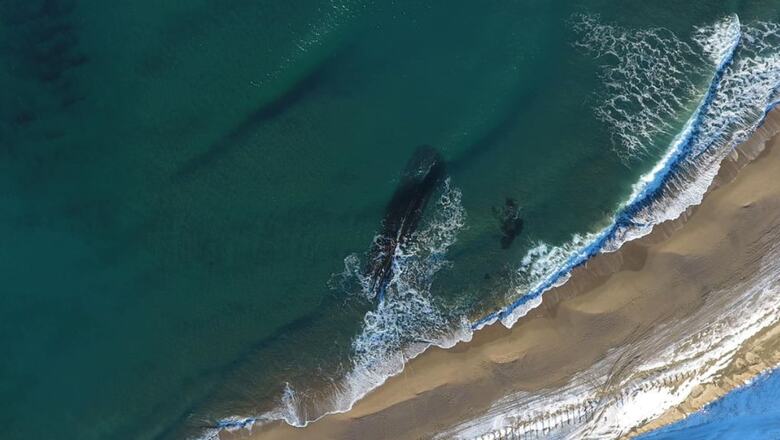
views
A coastal community in eastern Canada is abuzz with excitement after a centuries-old shipwreck mysteriously emerged at their nearby shore, according to media reports. A resident in Newfoundland province stumbled upon the dark silhouette under turbid waters while hunting seabirds on Cape Ray’s sandy shores.
The sight prompted Gordon Blackmore’s return home, announcing the discovery to his mother. Cape Ray, a community of 350 on Newfoundland’s southwest coast, shares a history with “the Rock,” an island that serves as the final resting place for at least eight ships succumbing to hostile weather, navigation errors, or sheer misfortune.
A shipwreck has appeared on the coast of Cape Ray, Newfoundland.The wreck, thought to be from the 19th century, was discovered by a local resident who was bird hunting in the area.
It’s believed that Hurricane Fiona may have dislodged the ship, now visible on the beach. pic.twitter.com/CgwSknlAHJ
— NoComment (@nocomment) January 30, 2024
What Led to Its Emergence
Neil Burgess, president of the Shipwreck Preservation Society of Newfoundland and Labrador, believes that a combination of coastal erosion and the force of post-tropical storm Fiona, which ravaged the region last year, may have dislodged the ship, The Guardian reported.
The British newspaper said last week’s substantial ocean swells likely propelled the wreck shoreward, marking what Burgess deems a “great, great event.” Social media images reveal a pile of waterlogged wood beams and planks, providing glimpses into the ship’s 1800s origins, with the prevalent use of wooden dowels and copper pegs. Its size, at least 24 meters, hints at a vessel larger than a schooner.
The provincial government in Canada has dispatched a team to identify and potentially preserve the ship. However, the unpredictable seas and weather, which historically dictated a ship’s fate, also regulate expert access to the site. Locals express concern that powerful waves might pull the wreck back into the depths. Officials caution against tampering, highlighting the dual threat of nature inflicting faster damage than souvenir hunters.
Wayne Osmond, a Cape Ray resident, underscores the region’s sporadic sea ice, stressing its potential to wreak havoc on the wreck’s integrity within hours. The community’s Facebook page has evolved into a hub for speculation and research on the wreck’s origins. Residents delve into old records and familial lore of tragic voyages, turning a historical spotlight on a community intimately entwined with the ocean.
Elizabeth Gover, a resident, urged collective efforts to provide a narrative and remembrance. “This is our history. Let’s find out,” she asserts, underlining the community’s renewed link with a maritime past that yearns for exploration.




















Comments
0 comment